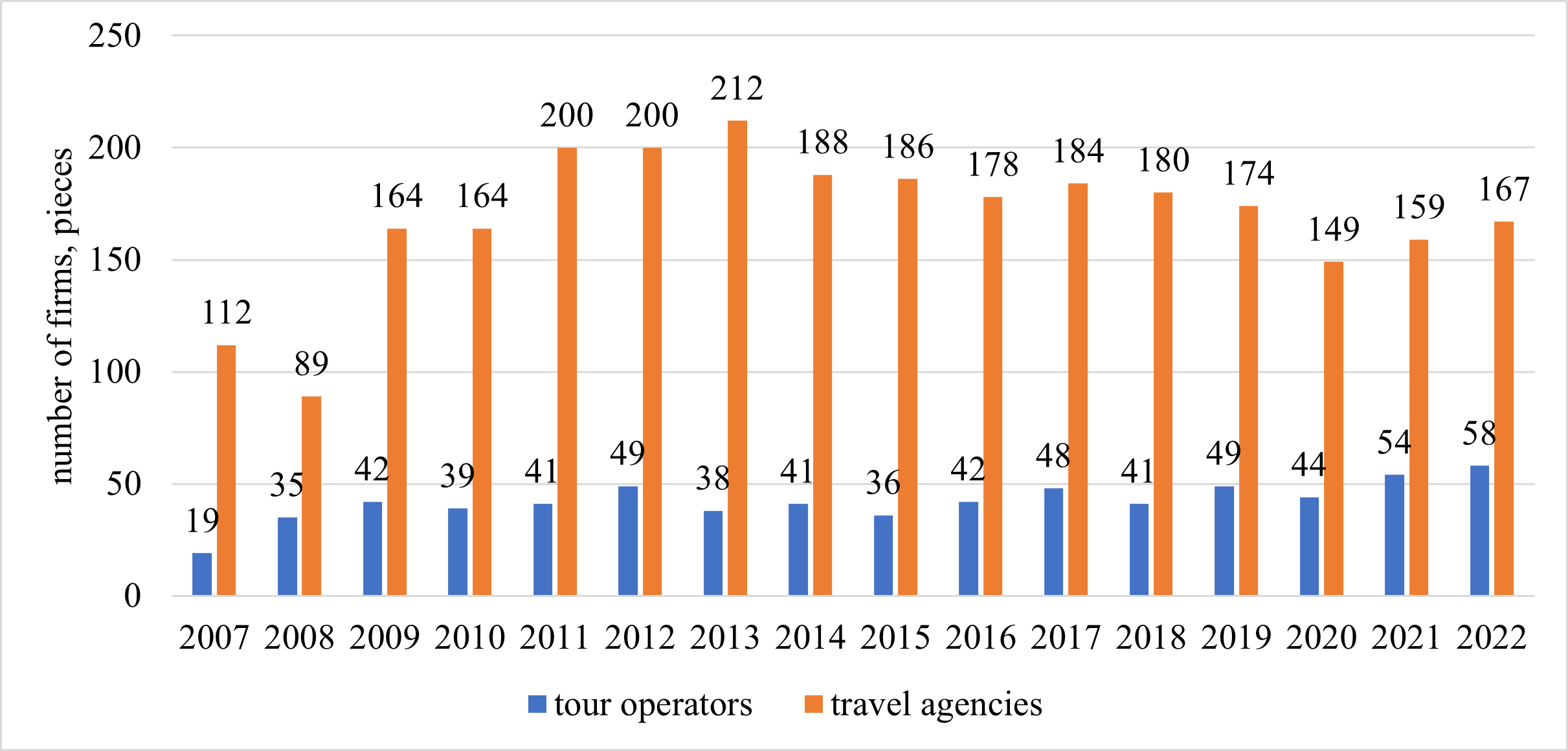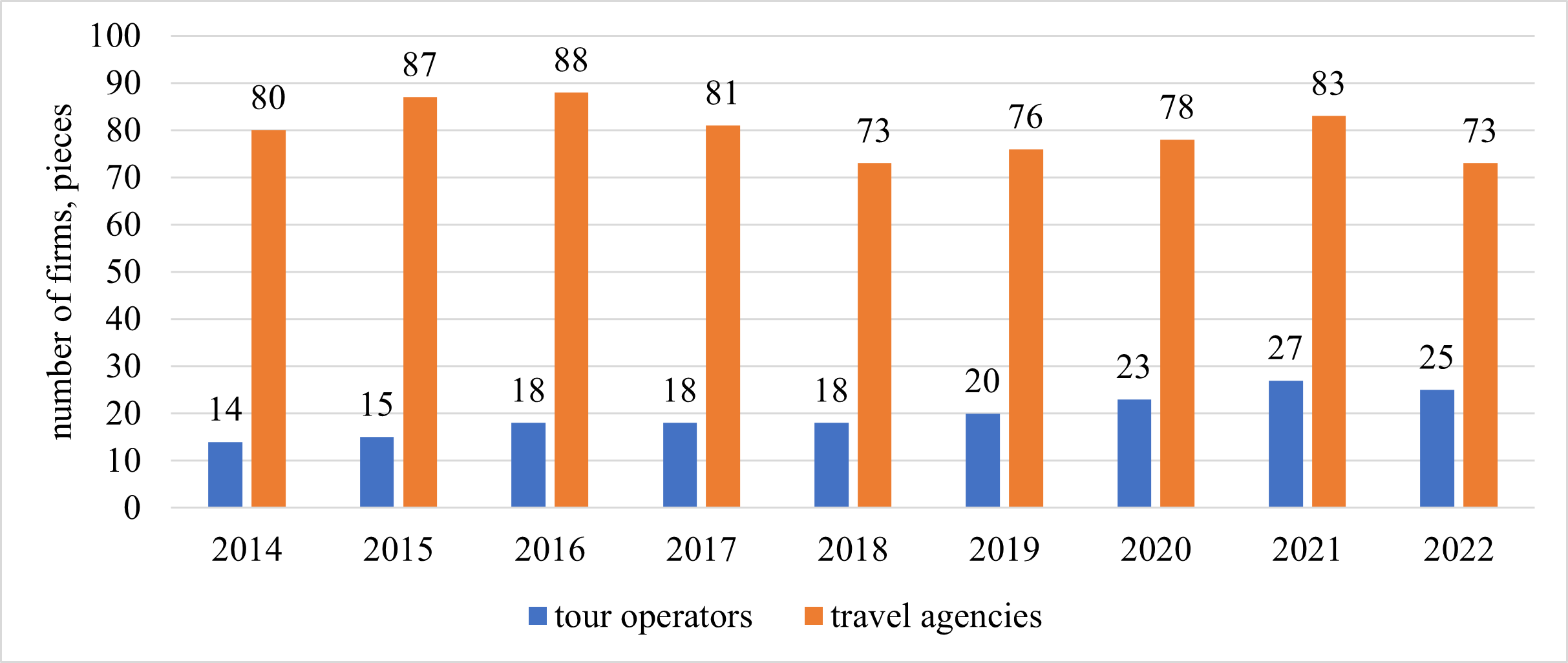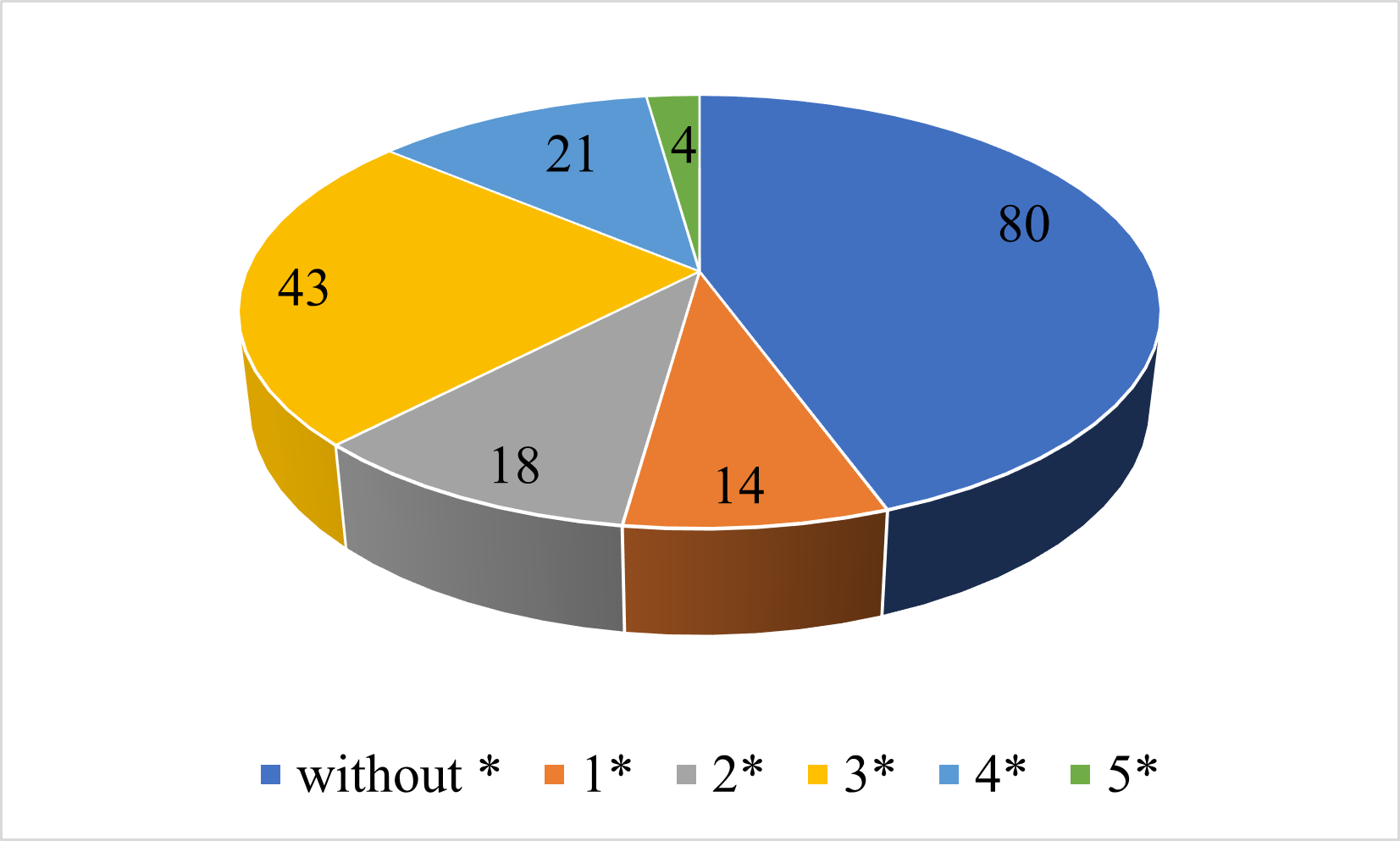ДИНАМИКА РАЗВИТИЯ ТУРИЗМА В АЛТАЙСКОМ РЕГИОНЕ
ДИНАМИКА РАЗВИТИЯ ТУРИЗМА В АЛТАЙСКОМ РЕГИОНЕ
Аннотация
Многие субъекты РФ, которые обладают ресурсами для развития туризма, определяют данную индустрию деятельности как стратегическое направление дальнейшего экономического развития. Алтайский регион, являясь туристским центром внутреннего и въездного туризма, ведет активную работу над организацией, развитием и продвижением туристской индустрии. Регион характеризуется туристской привлекательностью и с каждым годом увеличивает свои финансовые показатели. Анализ статистической информации по туристским потокам позволяет своевременно воздействовать на туристическую отрасль путем поддержания позитивных и ослабления негативных тенденций. Цель исследования: на основе актуальной статистической информации и анализа динамики развития Алтайского края и Республики Алтай за десять лет и оценить состояние внутреннего туризма и возможные направления дальнейшего развития.
1. Introduction
To date, approximately 70% of the visitors to the region come from the constituents of the Siberian Federal District and 17% from the Central Federal District. The tourist industry of the Altai region is supported by the state at the federal level – through subsidies, grants, investments and cashbacks. The target audience of the Altai region expands and results in the emergence of brand-new travel destinations and financial incentives. Additionally, the hotel certification process will boost the attractiveness of the region. Federal support for the development of regional tourism, and active attempts of the executive authorities to promote the Altai Region, will allow the region to take its rightful place in the tourist market.
2. Research methods and principles
The theoretical and methodological basis of the study was scientific research in the field of domestic tourism presented in the works of A.B. Kosolapova, A.S. Kuskova, E.G. Istomina et al. The study is based on official statistics, as well as strategies and programs for the development of tourism in the Altai Krai and Republic of Altai, as presented on the official statistical sites. The study covers the time period from 2010 to 2022. Scientific research methods will be comparative geographical, statistical, analytical, diagnostic, interpretational.
3. Main results

Figure 1 - Dynamics of tourist traffic in the Altai Krai and the Altai Republic for 2010–2022

Figure 2 - Dynamics of tour operators and travel agents of the Altai Krai for 2007-2022

Figure 3 - Dynamics of tour operators and travel agents in the Altai Republic for 2014–2022
As of April 2023, 115 hotels in the region have confirmed their status at the federal level – (47 without stars classification, 7 with one star, 14 with two, 32 hotels with three stars, 15 with four stars and 1 with five stars). Over the past few years, there has been a positive growth in investment. The total number of rooms from 2015 to 2023 increased by 11.8%. Mainly hotels with a small number of rooms, which can be classified as economy hotels 1–2 stars, as well as new hostels, are opening on the hotel market.
For recreation and accommodation of guests in the Altai Republic, there are 903 travel companies, of which 256 accommodation facilities (110 hotels) . In this domain, small business is active: 235 collective accommodation facilities (91.8%) belong to small businesses.
As of April 2023, one third of 395 tourist objects (120 objects) passed the classification procedure. In the Altai region are the only five-star hotels in the Republic (Fig. 4) , .

Figure 4 - Certified hotels in the Altai region
Note: * - hotel star rating
Tourism experts positively assess the development potential of the Altai region, and to enhance tourist activities it is necessary to implement the following points: it is necessary to promote information designed for specific target audiences; when organizing tourist infrastructure, it is necessary to offer a variety of accommodation options with a wide range of additional services; develop road infrastructure, (in front of five-star hotels the roads are not particularly comfortable); improve the quality of service in all places of accommodation of guests. Weaknesses include underdeveloped leisure infrastructure and animation, low level of barrier-free tourism, accumulation of waste and garbage in places of rest at the end of the season, increased anthropogenic pressures and low purchasing power of the residents of the Altai and surrounding regions, which constrains tourist activity of all the people.
4. Discussion
The opening of new tourism opportunities in the Altai region will promote: development of transport accessibility and improvement of the quality of roadside service; reduce the impact of the seasonality factor and increase hotel occupancy; promotion of information about new services and areas of development in the region; growth of investment attractiveness in tourism in the region; improve the quality of services in staffing the tourism industry, educational programs and improve the language skills of the service staff; achieve the required level in the digital service infrastructure, formation of digital platforms for promoting brands and products in tourism; improve safety in active tourist activities by informing tourists about the risks and the state of the environment in tourist territories; the growth of the tourist activity of inhabitants of the Russian Federation, including the development of social tourism in the domestic market. In the Altai region, two types of tourism, gastronomic and medical, are actively implemented at the level of the Russian Union of Travel Industry to promote gastronomy experiences and support specialized event (gastro festivals), for example, the National championship of chefs, make elements of gastronomic tours a part of tourist programs , since food is an experience and the need to eat several times a day gives the opportunity to develop the economy and support the population in the local ethnic cuisine with natural organic products.
5. Conclusion
The main problems of the tourism industry in the Altai region are related to the following areas: seasonality – about two thousand accommodation facilities operate only in the summertime; safety and quality of services; traffic jams and congestion on the main roads in the region during weekend; the poorly developed infrastructure animation; low level of barrier-free tourism; accumulation of waste in recreation areas, anthropogenic pressures.
To optimize the development of tourism in the region, it is necessary to continue implement the following tasks: continue to form charter package tours to the Altai; upload to easily accessible booking sites available for rent houses for the opportunity to isolate and be alone in nature; actively develop rural tourism, with the participation in rural holidays; to develop road infrastructure and transport accessibility;to improve the quality of roadside service; to promote the gastro-tourism industry; continue to develop qualified spa treatment, to develop a medical type of tourism; to promote ethno-demographic tourism; organize interesting tours with the study of the features of the Cossacks, small indigenous peoples; to offer open theme parks, offer excursions in the form of an educational quest; promote ecotourism with the natural local products; continue state support of Altai at the federal level – through subsidies, grants, investments, cashback; continue to implement investment projects. All this gives grounds to consider domestic tourism in the Altai region as a priority area.
